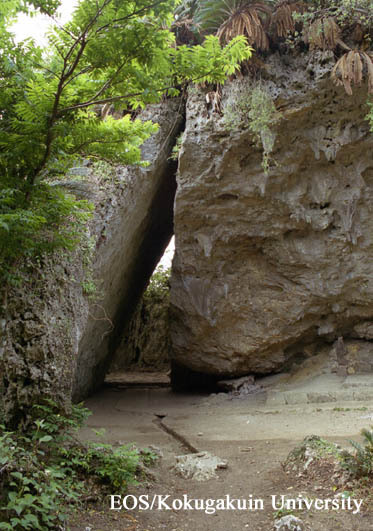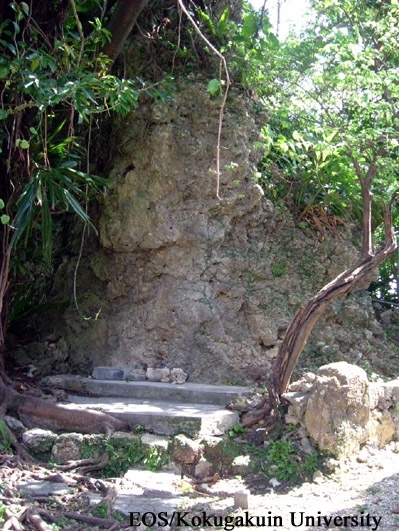- トップ
- Encyclopedia of Shinto
- Utaki
Encyclopedia of Shinto
| Main Menu: | |
| Links: |
詳細表示 (Complete Article)
| カテゴリー1: | 5. Rites and Festivals |
|---|---|
| カテゴリー2: | Rituals in Okinawa and Amami |
| Title | Utaki |
| Text | "Honored mountain." A sacred space in Okinawan villages where a deity similar to a village tutelary (see chinjugami) on the mainland is enshrined or to which it descends, and where people interact with that deity through the media rites and festivals. The names for these sites differ from region to region, including mui (Jp mori, "grove"), ugan (Jp kigan, "prayer"), and ogami (Jp kitō, "invocation"), but in general utaki is a luxuriantly wooded area where supplications and rites that involve the entire village take place. The nucleus of the utaki is called ibi. This is a natural object considered sacred, in most cases fieldstones or old trees. Given that supplications are made to the ibi, stones are arranged before it like a rectangular incense burner on which incense is offered. Some kami are thought to reside at the utaki, while others are believed to be involved with particular rites and visit the site when those rites take place. The former are classified as ancestral deities, while the latter constitute visiting kami (raihōshin) believed to have crossed over from the other world of Nirai-kanai. Human bones have been found in utaki, and for this reason some believe that utaki were once the burial ground for ancestors from the time of a given village's founding. There was a movement starting in the mid-1930s to reorganize utaki along the lines of the shrine system of the Japanese mainland, but this had not yet been achieved by the time Okinawa was invaded in the closing months of the Second World War. The occasional utaki with mainland elements such as shrine gates (torii) in front and worship halls (haiden) in the miya style are vestiges of this effort. — Saitō Michiko |






